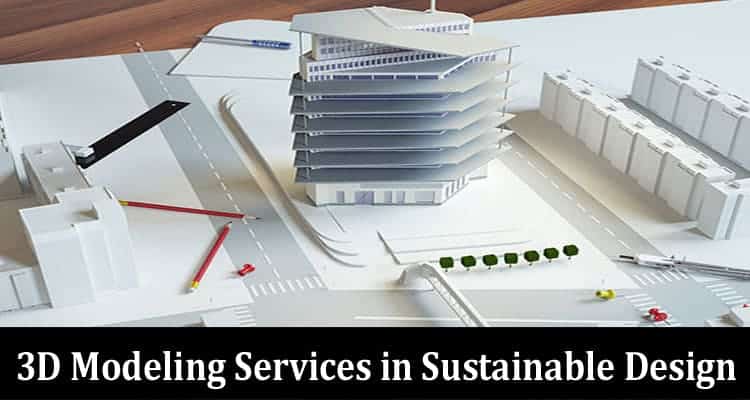Sustainable design has emerged as a main focus in architecture in recent years, with architects and designers seeking to create buildings that balance functionality and aesthetics while promoting a more sustainable future. As the world faces environmental challenges, architectural 3D modeling services are becoming increasingly essential while pursuing sustainable design. In this article, we will explore the impact of 3D architectural modeling services on sustainable design.
Architectural 3D Modeling Services
Architectural 3D modeling services utilize various techniques and applications that revolutionize the design process. Conceptual modeling allows architects to virtually present their ideas, which helps stakeholders visualize the proposed structure comprehensively. Detailed modeling takes it further by providing intricate renderings that closely look at materials, textures, and spatial relationships.
Rendering and visualization services contribute to creating realistic images that aid in client presentations and marketing efforts. Furthermore, integrating virtual reality (VR) and augmented reality (AR) technologies allows stakeholders to experience designs in an immersive and interactive manner.
Benefits and Roles of Architectural 3D Modeling in Sustainable Design
Using architectural 3D modeling services in sustainable design yields many benefits. Enhanced visualization is perhaps the most immediate advantage. Architects can vividly portray their sustainable design concepts, allowing clients and stakeholders to grasp the environmental considerations and innovative features embedded in the project. This facilitates better understanding and fosters a sense of collaboration among project participants.
Improved communication is another significant benefit. The visual richness of 3D models transcends language barriers, making it easier for architects to convey complex sustainable design concepts to clients, builders, and regulatory authorities. This streamlined communication process promotes a more collaborative and efficient workflow, reducing the likelihood of misunderstandings that could impact the project’s sustainability goals.
Efficient design iterations are vital for achieving optimal sustainability. 3D modeling enables architects to swiftly test and refine various design elements, ensuring the final product meets environmental standards without compromising functionality or aesthetics. This iterative process contributes to a more refined and sustainable result, as architects can easily tweak parameters and assess the impact on energy efficiency, materials usage, and overall environmental footprint.
Energy efficiency analysis is a key aspect of sustainable design, and architectural 3D modeling services find importance in this domain. Architects can simulate and analyze the energy performance of a building, considering factors such as sunlight exposure, ventilation, and insulation. This data-driven approach allows for informed decision-making, leading to designs that minimize energy consumption and maximize efficiency.
In addition, architectural 3D modeling services aid in waste reduction and material optimization. As a result, architects can minimize material waste by accurately visualizing and planning the construction process, thereby contributing to a more sustainable construction industry. This proactive approach aligns with the broader goal of creating environmentally conscious and economically viable buildings.
What Does the Future Hold?
As we look towards the future, we can see how architectural 3D modeling services will evolve and adapt to sustainable design.
Advancements in 3D modeling technology will continue to improve the precision and realism of virtual representations. Artificial intelligence integration will become more common, allowing architects to automate certain aspects of the design process and optimize for sustainability. Machine learning algorithms can analyze large data sets to suggest design modifications that improve energy efficiency, material usage, and sustainability.
We can also expect to see more widespread use of virtual and augmented reality technologies, which offer immersive experiences beyond traditional visualization. Clients, investors, and designers will be able to “walk through” virtual spaces, experiencing the sustainable features more interactively. This enhances communication and fosters a deeper appreciation for the environmental considerations embedded in the design.
As 3D modeling tools become more sophisticated, architects’ roles will shift towards a more holistic understanding of sustainability. They will need to consider not only the visual and spatial aspects but also the broader environmental impact throughout the life cycle of a building. This shift towards a life cycle assessment approach will further contribute to creating truly sustainable structures.
Conclusion
Architectural 3D modeling services are a powerful tool for sustainable design. They offer a range of benefits, including improved visualization, better communication, efficient design iterations, energy efficiency analysis, and waste reduction. The importance of 3D modeling in achieving sustainable design cannot be overstated. Architects and designers are encouraged to leverage these tools to create innovative structures that contribute positively to the environment and society.


